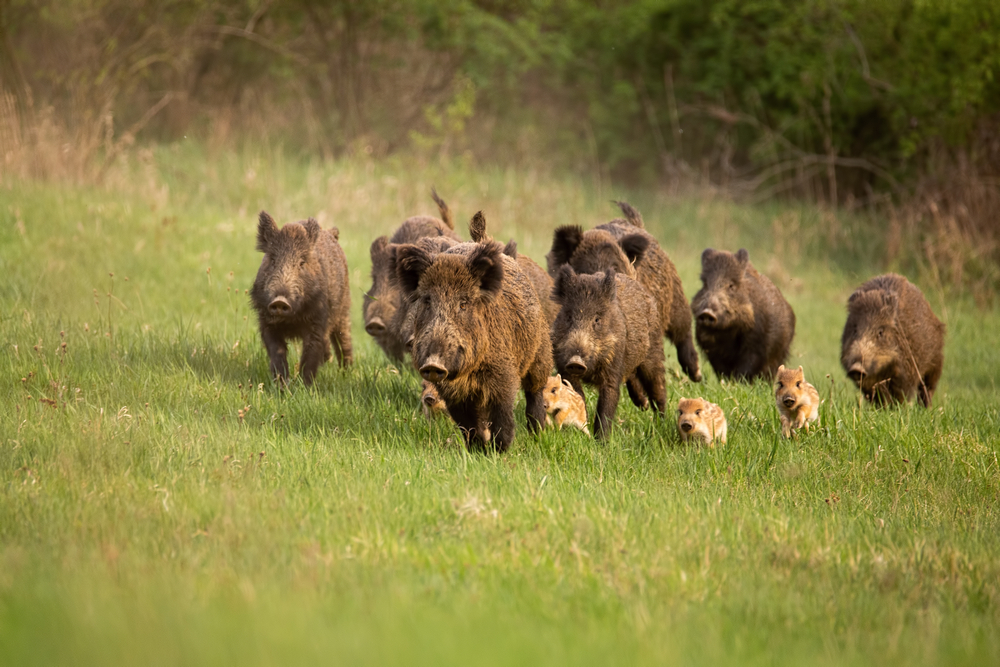It seems that the feral-hog population is thriving, and the number of wild dogs is increasing year after year in our country. While other hunting opportunities rarely increase, the chances of bagging something are pretty much endless when it comes to wild pigs.
They have multiplied so much that hunters in some areas consider them the second most favorable option for hunting, with white-tailed deer still taking the lead. However, since wild hogs are considered an invasive species and their numbers constantly rise, hunting restrictions are few. Even so, this doesn’t mean they are an easy hunt.
Feral hogs have become plentiful because they are intelligent and cunning animals, and you need to learn a thing or two about them if you want to be successful in bagging them. After hunting wild hogs around the country, I can honestly say that you need to understand their habits and have a few tricks up your sleeve if you want to put some pork on the table.
Go to wet areas
Pigs love water and are drawn to wet and marshy areas, so these places should be your starting point when hunting wild hogs. Since they do not have sweat glands, they need water and moist, shaded areas to cool off.
They will spend most of their time in such areas during torrid days. And, they love wallowing in the mud since it provides relief from pests. Wild hogs will take advantage of the occasional mud bath to eliminate lice, ticks, and blowflies.
Being omnivores means they can find food almost anywhere, so being near a water source is an essential aspect of a pig’s life. They have a diet consisting of roots, weeds, nuts (of all sorts), berries, tubers, insects, reptiles, and even garbage. You can imagine that finding food is rarely difficult for these animals, so you should emphasize water rather than food.
If you find yourself near a water source, look for tracks and scats and signs of wallowing and rubs since these are good indicators of the hog’s presence and movement. Finding these signs will allow you also to discover prospective ambush sites in the vicinity.
Other signs
By nature, pigs love to dig and tear up the ground while looking for roots, tubers, and insects essential to their diet. I know a few people that call them nature’s excavators, and it’s incredible how fast a sounder of 20 pigs can destroy agricultural land. A close friend of mine had 10 acres of land destroyed by these annoying pests in less than a week. So, for you, the intelligent hunter, looking for signs of ground disturbance becomes mandatory for tracking wild hogs.
Other signs that may be less obvious to the untrained eye are rubbing areas on logs, rocks, trees, telephone, and fence posts. To get rid of an itch or insects and other pests, pigs will often rub themselves to whatever’s available.
I’ve mentioned…

